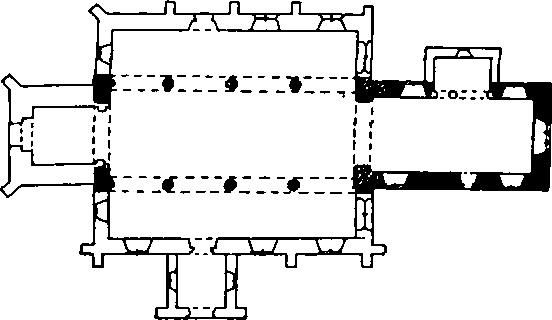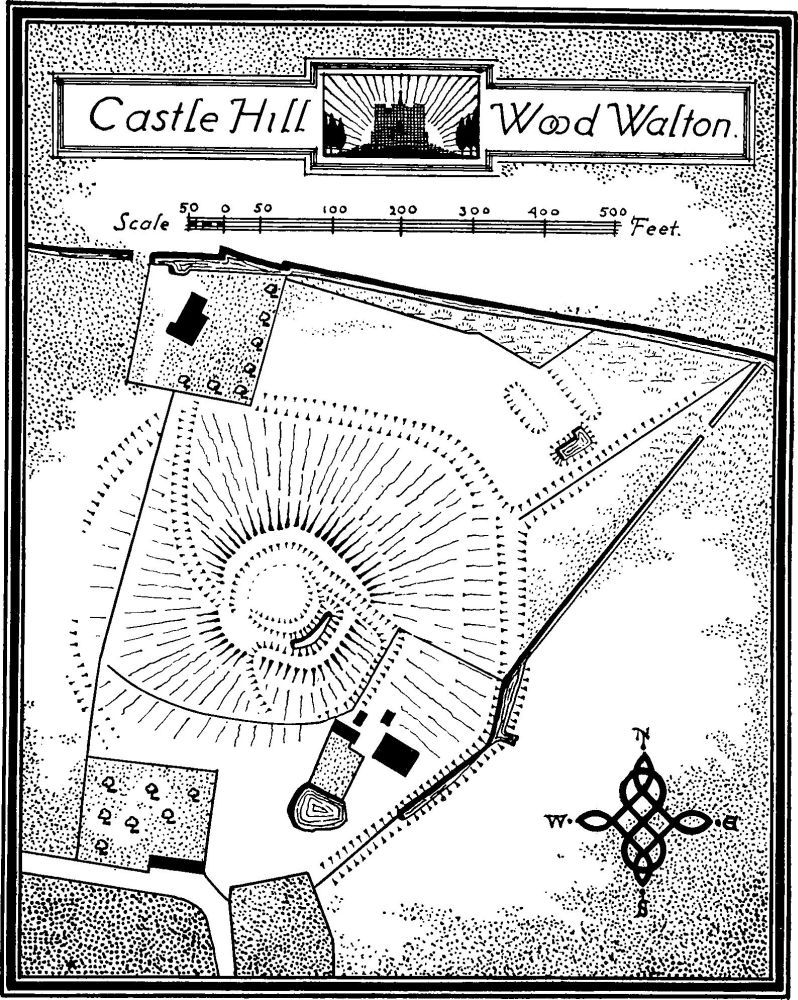An Inventory of the Historical Monuments in Huntingdonshire. Originally published by His Majesty's Stationery Office, London, 1926.
This free content was digitised by double rekeying. All rights reserved.
'Wood Walton', in An Inventory of the Historical Monuments in Huntingdonshire( London, 1926), British History Online https://prod.british-history.ac.uk/rchme/hunts/pp298-300 [accessed 24 November 2024].
'Wood Walton', in An Inventory of the Historical Monuments in Huntingdonshire( London, 1926), British History Online, accessed November 24, 2024, https://prod.british-history.ac.uk/rchme/hunts/pp298-300.
"Wood Walton". An Inventory of the Historical Monuments in Huntingdonshire. (London, 1926), , British History Online. Web. 24 November 2024. https://prod.british-history.ac.uk/rchme/hunts/pp298-300.
In this section
98. WOOD WALTON (C.c.).
(O.S. 6 in. (a)XIII N.E. (b)XIII S.E. (c)XIV N.W.).
Wood Walton is a parish and village, 6½ m. N.N.W. of Huntingdon. The church and Castle Hill are the principal monuments.
Ecclesiastical
a(1). Parish Church of St. Andrew stands nearly 1 m. N.N.W. of the village. The walls are of rubble with dressings of Barnack stone; the roofs are tiled. The S. arcade of the Nave was built about the middle of the 13th century. The Chancel was re-built c. 1330. Early in the 16th century the N. arcade was built and the clearstorey added. The church was drastically restored in 1859–60, when the North and South Aisles and the West Tower were re-built; the Organ Chamber and South Porch are also modern.

The Church, Plan
Architectural Description—The Chancel (26 ft. by 12 ft.) has an E. window, all modern except the 14th-century moulded rear-arch. In the N. wall are two early 14th-century windows, the eastern of two pointed lights with a plain spandrel in a two-centred head with a moulded label and mask-stops; the western window is of two trefoiled lights in a square head with a moulded label and mask-stops. In the S. wall are two early 14th-century windows similar to the western window in the N. wall; the westernmost window is carried down below a transom to form a 'low-side'; between the windows is a 14th-century doorway with chamfered jambs and two-centred head. The partly restored early 14th-century chancel-arch is two-centred and of two chamfered orders, the outer continuous and the inner resting on modern corbels.
The Nave (39¼ ft. by 13¾ ft.) has an early 16th-century N. arcade (Plate 77) of four bays with two-centred arches of two chamfered orders continued down the piers but interrupted on the eastern and westernmost piers by moulded and embattled capitals and on the middle pier by a moulded capital with blank shields; the piers have moulded bases; the E. respond has an embattled capital and a modern corbel and the W. respond is modern. The 13th-century S. arcade is of four bays with two-centred arches of one plain and one chamfered order; the two easternmost piers are round and have moulded capitals and bases; the westernmost pier is octagonal and has a moulded capital, but the base is buried. The E. respond has a restored embattled capital and a modern corbel, and the W. respond has a semi-octagonal attached shaft with a moulded capital and modern base. The early 16th-century clearstorey has on each side four windows, each of two cinque-foiled lights in a square head.
The North Aisle is modern, but in the E. wall is a window of two cinque-foiled lights in a four-centred head incorporating some late 15th-century work.
The South Aisle is modern, but in the E. wall is a similar window also incorporating some late 15th-century work. Some old stones have also been re-used in the end windows in the S. wall; the 14th-century S. doorway, probably re-set, has jambs and two-centred arch of two chamfered orders with a moulded label.
The West Tower is modern, but the tower-arch incorporates some old material.
Fittings—Coffin-lid: Re-set in the W. wall of the N. aisle—small tapering coped slab with moulded edge and ornamental cross, 13th-century. Crosses: On jambs of S. doorway, two incised crosses with equal arms, probably mediæval. Glass: In chancel —in N.W. window, two panels (Plate 157) (a) with figures of St. Katherine crowned and holding a sword and wheel, standing under a trefoiled and crocketed canopy with side shafts and pinnacles; (b) with figure of St. Lawrence holding gridiron, standing under similar canopy, both late 13th- or early 14th-century; in tracery, jumble of 15th-century fragments. In N.E. window, in spandrel, parts of an ornamental quatrefoil and grisaille fragments, 15th-century. Miscellanea: Re-set in W. wall of porch—several moulded stones, 13th- and 14th-century.
Condition—Good.
Secular
a(2). Castle Hill, motte and bailey, 700 yards N.N.E. of the church. The motte stands on a natural hillock and is about 135 ft. in diameter and 8½ ft. high above the bottom of the surrounding moat on the S.E. There are traces of a small bailey on the S.E. side and of an outer circular moat surrounding the hillock.
Condition—Poor.
c(3). Homestead Moat, on the E. side of the village and 1 m. S.S.E. of the church, is of triangular form. There are traces of a rampart at the S.E. angle of the island, and there is a small circular mound in the W. angle.
a(4). Red House Farm, house and moat, 1,500 yards S. of the church. The House is of two storeys; the walls are of brick and the roofs are tiled. It was built probably late in the 17th century and is of T-shaped plan with the cross-wing at the S. end. The S. front is of modern brick. Inside the building are two wide fireplaces and a chamfered ceiling-beam.

Castle Hill, Wood Walton.
The Moat, to the S. of the house, is fragmentary.
Condition—Of house, good.
b(5). Abbey Farm, house 180 yards S.W. of (4), is of one storey with attics; the walls are of brick and the roofs are tiled. It was built probably early in the 17th century on a T-shaped plan with the cross-wing at the S.E. end; the brick-facing is modern. Inside the building the middle room of the cross-wing has a chamfered ceiling-beam and the S.W. room has a wide fireplace. The room in the N.W. wing has an open-timbered ceiling.
Condition—Fairly good.
a(6). Old Manor House, S.E. of (2), is of two storeys, partly of brick and partly timber-framed; the roofs are tiled. It was built late in the 17th or early in the 18th century on an L-shaped plan with the wings extending towards the W. and S. The house has been much altered externally, and there is a modern addition on the S. of the W. wing. Inside the building the early 18th-century staircase has turned balusters and a rather narrow moulded handrail. The S. room in the S. wing is lined with early 18th-century panelling, with a corner cupboard. The room above, on the first floor, has an original stone fireplace with panelled jambs and head, a moulded cornice and a rectangular marble key-block carved with a quartered shield-of-arms of Marshall and a motto. In the adjoining room is a similar fireplace, apparently a later copy, and having only the early arms of Marshall on the key-block.
Condition—Fairly good.
